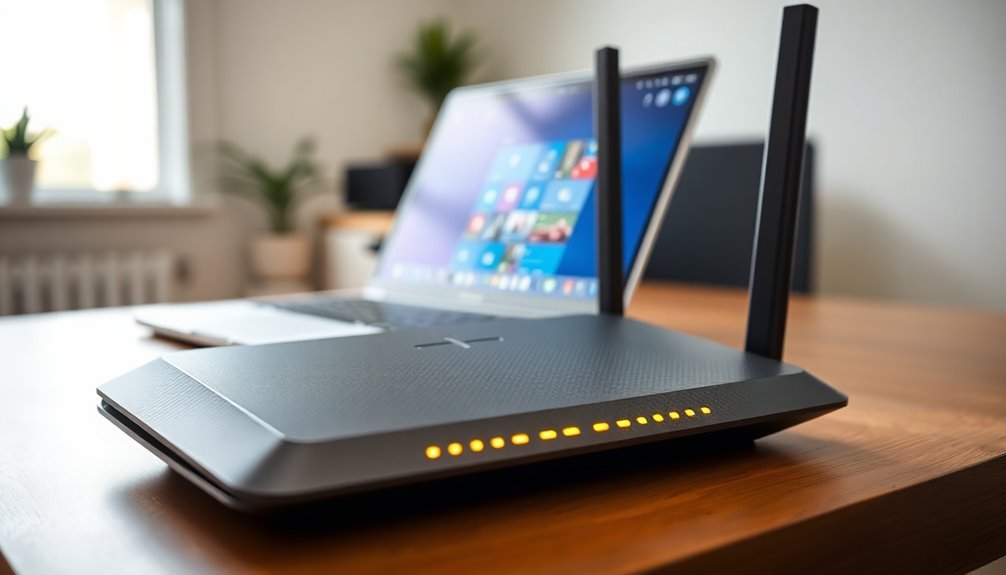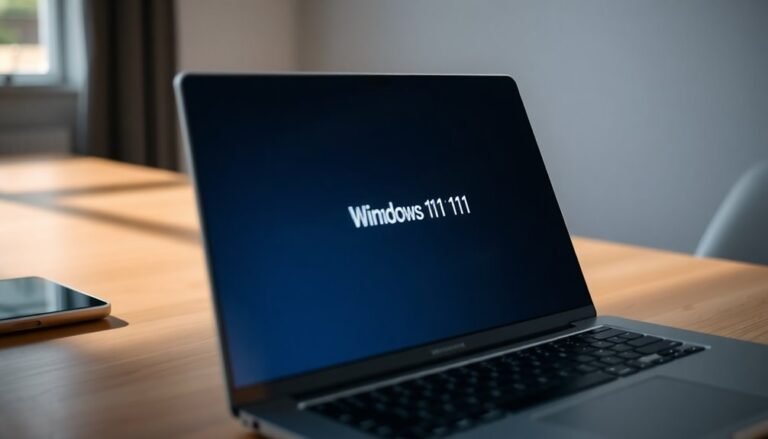Speed Up Windows Store Downloads: Optimize Microsoft Store Performance

To speed up Microsoft Store downloads, start by using a fast, stable internet connection. Connect your device with an Ethernet cable if possible for better stability.
Keep Windows and the Store app updated to ensure optimal performance. Close background apps to free up system resources.
Clear the Store cache by running WSReset.exe. This can resolve issues and improve download speed.
Enable Delivery Optimization in Settings for faster, peer-assisted downloads. Set bandwidth limits to prevent network overload.
These steps can quickly boost download speeds. There are even more ways to maximize your Store experience.
Ensure a Reliable and Fast Internet Connection

Boost Microsoft Store performance with a reliable and fast internet connection. Choose a high-speed broadband service like fiber-optic or cable internet, targeting download speeds above 100 Mbps for smooth app downloads and updates.
For the best stability and reduced latency, connect your device directly via a wired Ethernet cable instead of Wi-Fi. Before downloading large files, test your internet speed using trusted online speed test tools to ensure optimal performance. Clearing cache before downloads can optimize performance by removing temporary files that might otherwise slow down the process.
Avoid downloading apps during peak hours to prevent ISP throttling caused by network congestion. Verify that your internet plan offers ample monthly data to avoid extra charges or slowdowns.
Close bandwidth-heavy applications and browser tabs, and pause any background downloads to free up network resources. Use Windows Task Manager and Resource Monitor to detect and stop processes consuming excessive bandwidth.
Enhance download speeds further by configuring your router’s Quality of Service (QoS) settings to prioritize Microsoft Store traffic.
Keep your router firmware up to date to maintain compatibility and network efficiency. Implementing these steps will ensure a faster, more reliable Microsoft Store experience and smoother app installations.
Keep Windows and Microsoft Store Up to Date
How to Keep Windows and Microsoft Store Up to Date for Optimal Performance
To get the best experience from the Microsoft Store, it’s essential to keep both Windows and the Microsoft Store app updated regularly. Start by ensuring that Windows Update is configured to check for updates frequently. By default, Windows checks for updates every 22 hours, but you can customize this setting through Group Policy or the Windows Registry to receive updates more often.
Regular updates help maintain system stability, enhance security, and ensure the latest features are available. Many users have reported recurring issues with the Microsoft Store that can sometimes be resolved through consistent updating and troubleshooting.
Next, enable automatic app updates in the Microsoft Store. Open the Microsoft Store app, go to Settings, and turn on “Update apps automatically.” This feature allows apps to update seamlessly in the background without interrupting your workflow.
If you encounter issues such as stalled or repeated downloads, navigate to Start > Microsoft Store > App settings, and use the Repair or Reset options. Repair fixes the app without deleting data, while Reset clears the cache and app data to resolve persistent problems.
By regularly updating Windows and the Microsoft Store and utilizing built-in repair tools, you can minimize download delays, improve app performance, and keep your system running smoothly.
Stay up to date to enjoy the latest features and enhanced security on your Windows device.
Optimize Network and Bandwidth Usage
Optimize Network and Bandwidth Usage for Faster Microsoft Store Downloads
To enhance Microsoft Store performance, a strong hardware setup and updated software are essential, but optimizing your network configuration plays a crucial role in boosting download speed and reliability.
Begin by closing unnecessary background applications and browser tabs, as they consume valuable bandwidth and can slow down Microsoft Store downloads, especially for large app installations.
For users on multi-device networks, enabling Delivery Optimization in Windows Settings is highly recommended. This feature allows devices to share app and update files locally through peer-to-peer caching, significantly reducing internet bandwidth usage and accelerating download speeds.
Manage bandwidth effectively by configuring limits for Microsoft Store downloads within Delivery Optimization settings. Setting appropriate foreground and background bandwidth limits prevents Microsoft Store downloads from monopolizing your internet connection, ensuring other applications continue to run smoothly.
Further optimize your network by fine-tuning TCP/IP parameters, switching to faster DNS servers, and enabling Quality of Service (QoS) on your router to prioritize Microsoft Store traffic.
If you experience slow download speeds, check your connection to the nearest Content Delivery Network (CDN) server. Additionally, consider ISP-level routing improvements or using a properly configured VPN to enhance connectivity and download performance.
Clear Microsoft Store Cache and Re-register the App
If you’re facing slow downloads or persistent errors in the Microsoft Store, clearing the Microsoft Store cache and re-registering the app can fix many common problems. To clear the Microsoft Store cache, press the Windows key + R, type WSReset.exe, and press Enter. This will open a blank Command Prompt window, and after a few moments, the Microsoft Store will automatically reopen, clearing corrupted temporary files without affecting your apps or settings.
For more advanced troubleshooting, open Settings by pressing Win + I, navigate to Apps & Features, find Microsoft Store, click Advanced options, and then select Reset. This process will remove all app data, including cache and sign-in information, and reinstall essential Microsoft Store components to ensure smooth operation.
If Microsoft Store issues continue, use the Windows Store Apps troubleshooter by going to Settings → Update & Security → Troubleshoot → Additional troubleshooters and running the troubleshooter for Windows Store apps. You can also clear browsing data within the Microsoft Store app under Privacy and security settings.
In severe cases where the Microsoft Store remains unresponsive or dysfunctional, re-register the Microsoft Store app using PowerShell. Run PowerShell as an administrator and execute the following command to restore critical app functionality:
“`powershell
Get-AppxPackage -allusers Microsoft.WindowsStore | Foreach {Add-AppxPackage -DisableDevelopmentMode -Register “$($_.InstallLocation)AppXManifest.xml”}
“`
These steps to clear the Microsoft Store cache and re-register the app are proven solutions to fix slow downloads, errors, and other Microsoft Store problems on Windows 10 and Windows 11. For the best results, keep your Windows system updated and regularly maintain the Microsoft Store to enjoy a seamless app download and update experience.
Configure Delivery Optimization for Maximum Speed

Optimize Delivery Optimization Settings for Maximum Download Speed in Microsoft Store
To boost Microsoft Store download speeds, configure Windows Delivery Optimization settings to efficiently utilize both network and peer-to-peer resources. Follow these steps for optimal performance:
- Open Windows Settings > Update & Security > Delivery Optimization.
- Enable “Allow downloads from other PCs.”
- Select “PCs on my local network, and PCs on the Internet” to expand peer sources. This allows your device to download update parts from nearby PCs and internet peers, increasing speed and reducing server load.
For advanced customization, use the Group Policy Editor (gpedit.msc):
- Navigate to Computer Configuration > Administrative Templates > Windows Components > Delivery Optimization.
- Set the Download Mode to “1” (same NAT peering) to optimize local peer sharing.
- Configure bandwidth limits to prevent network congestion by setting absolute or percentage-based caps for download and upload speeds.
In enterprise environments or when managing multiple devices, leverage Microsoft Connected Cache or configure private peer groups. These options enable faster, secure content distribution tailored to your network topology.
Regularly review and adjust Delivery Optimization settings to maintain maximum download efficiency and network performance. Implementing these best practices ensures faster Microsoft Store downloads and a smoother user experience.
Frequently Asked Questions
Why Are Microsoft Store Downloads Slower Than Other Platforms Like Steam or Epic Games?
You experience slower Microsoft Store downloads because Delivery Optimization restricts bandwidth, download tasks run at low priority, and power management or network settings throttle performance. Unlike Steam or Epic, you can’t easily adjust server selection or download controls.
Can Antivirus or Firewall Settings Affect Microsoft Store Download Speeds?
Yes, your antivirus or firewall settings can slow Microsoft Store downloads by scanning files or blocking connections. Temporarily disable protection or whitelist Store processes to troubleshoot, but always restore security settings immediately after testing to stay protected.
Does the Time of Day Impact Microsoft Store Download Performance?
Yes, time of day impacts Microsoft Store download speeds. You’ll often see slower downloads during peak evening hours due to network congestion or ISP throttling. Try downloading at off-peak times for improved performance and more reliable speeds.
Do Download Speeds Differ Between Windows 10 and Windows 11?
Yes, you’ll notice Windows 11 usually delivers slightly faster download speeds than Windows 10, though differences are minor. To maximize performance, manage background processes, update drivers, and check your system configuration and power settings for ideal throughput.
Are There Regional Restrictions That Limit Microsoft Store Download Speeds?
Think of regional restrictions as locked doors—they block what you can access, not how fast you get it. You won’t see speed caps by region; if downloads lag, troubleshoot your local network, device, or ISP instead.
Conclusion
If you follow these steps, you’ll turbocharge your Microsoft Store downloads to lightning speeds—faster than you ever thought possible. Don’t let slow downloads hold you hostage another second. With a rock-solid connection, up-to-date software, optimized bandwidth, a refreshed Store cache, and finely tuned Delivery Optimization, you’ll leave sluggish performance in the dust. Take troubleshooting into your own hands and experience downloads so fast, you’ll think you’ve bent the laws of physics.





